The studio’s forgotten hero has been through more little revolutions than you might think – and we’ve got the newest one.
You may be familiar with noise gates, or audio gates. They’re hardly the sexiest music production tool at your disposal, but over the years, gates have quite literally shaped the sound of whole genres of music. While gates started off their life as a purely utilitarian piece of equipment, producers and engineers quickly identified innovative new ways to use them.
In this article, we’ll take a look at how gate devices have changed, and how their uses have evolved over time.
Many consider the first commercial noise gate to be the Keyable Program Expander, or Kepex. It was a small 500 series piece of hardware that was designed by Allison Research to tackle the problem of noise building up throughout a signal’s path. It was launched in 1970, and it wasn’t long before engineers realized it could be used to tighten up the dynamics of recordings.

A decade later, Drawmer threw their hat into the ring with the DS201, a dual gate unit that took the concept of the Kepex and added a whole host of features, setting the new standard for noise gates. The addition of frequency selective filters allowed engineers to refine the signal that triggered the signal to be gated, whether an external input or an internal signal.
In addition to Attack and Release parameters, the Hold control gave engineers increased control over their signal’s contour. Ducking control allowed engineers to reduce the level of the signal rather than open the gate when the detector was active, and a ‘Key Input’ (what we would now call an external sidechain input) was also present. Despite being launched 40 years ago, the DS201 is still on the market today.

So it’s clear that since their conception, gates have always had a range of uses. Let’s take a look at some of those uses and how they have changed over the years.
As already mentioned, a gate’s primary purpose was to remove tape and electrical noise from recordings with high noise floors, a problem that has generally subsided as technology has progressed. This was achieved by setting the gate’s threshold or sensitivity to be higher than the level of the unwanted noise, but lower than the level of the recorded audio. This was particularly helpful for guitar recordings, as guitar amps are known to be noisy – it’s often part of their appeal. Overdubbing can also cause a build up of undesirable noise, and gates were employed to deal with this in the same way.
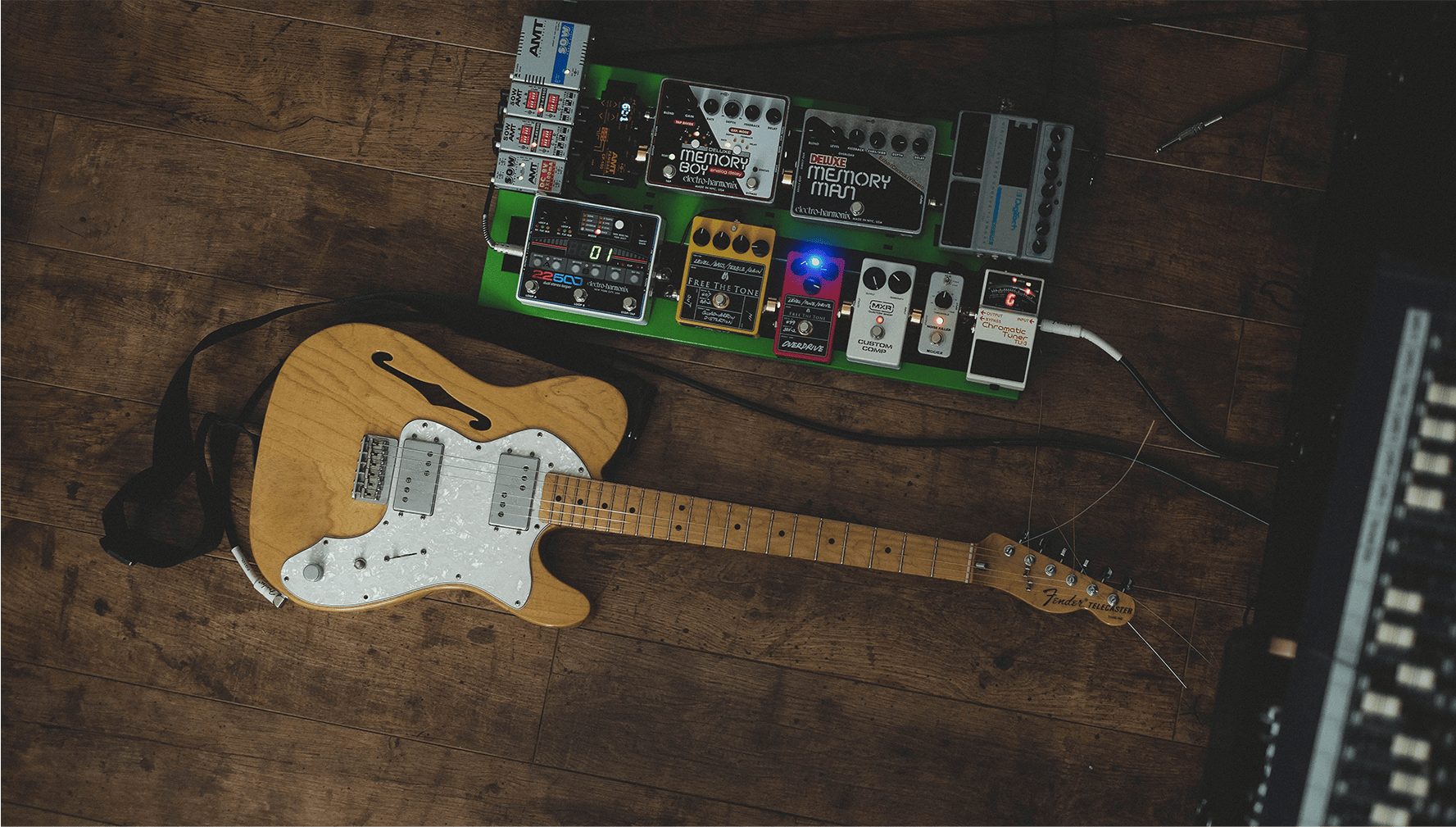
Gates are capable of removing more than just electrical and mechanical noise, though. Using a similar technique, gates can remove the mic bleed and room noise from recordings. This is particularly useful on drum recordings, where lots of loud elements are recorded in very close proximity to one another. For this reason, the introduction of Attack and Hold controls on later gate models were welcome additions, as they allowed engineers to accentuate or attenuate the different portions of a drum sound accordingly. For example, you could attenuate a snare’s transients with a slower attack time, or tighten up a ringing ride cymbal with shorter hold and release times.
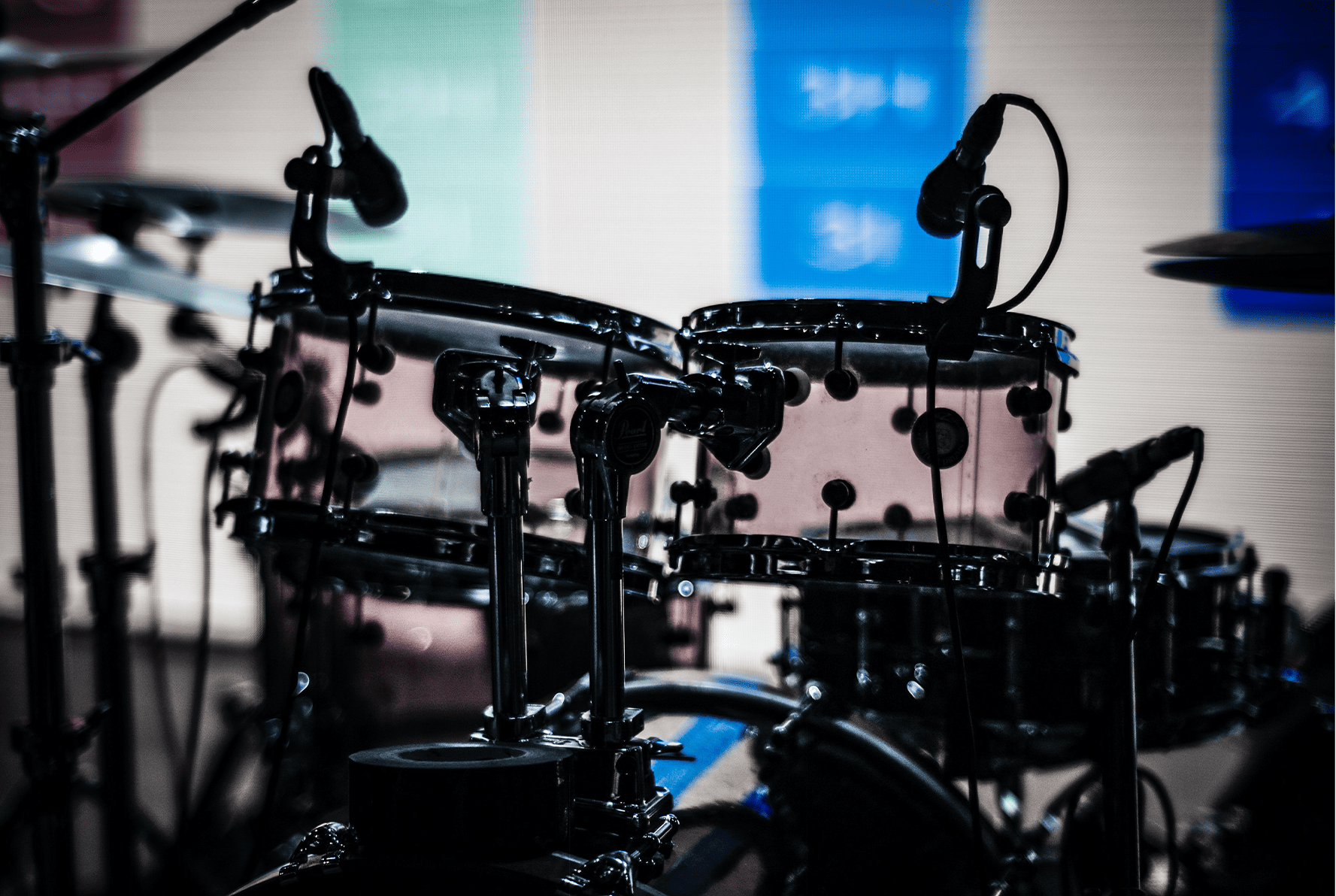
This is made even simpler with smart:gate’s instrument Profiles, which analyze your signal and establish which parts of it should be gated according to the Profile set by the user.
While gating technology is relatively senior when it comes to managing unwanted noise, the same concept has been applied to new noise removal solutions. There are a few noise removal plugins on the market, and they each have their own way of doing things. One modern method of removing noise from a complex signal involved using a complex network of cleverly configured frequency-responsive gates. This underlines the power of noise gating when used in more elaborate applications.
Perhaps the most recognizable use for a gate, even to those who aren’t in-the-know about music production, is the classic gated reverb effect. Made famous in the 80s by the likes of Peter Gabriel, Kate Bush and Prince, the simple yet effective processing technique has made somewhat of a resurgence in recent years. Rihanna, Dua Lipa and Beyoncé are among some of the contemporary pop artists who have implemented the sound in their own productions.
The approach here is to apply a dense reverb to an element, commonly a snare or tom, followed by a gate. Carefully configuring the gate’s threshold, attack, hold and release settings then allows you to shape the sound of your signal, usually with the reverb tail being abruptly shut off by the gate at a designated time.
The technique allows you to add masses of space and character to elements with the impression of a longer reverb, but without muddying up the entire mix with a long washed out reverb sound. The gate settings can also be automated between sections to create varying levels of space.
A strong contender for the most famous gate-based production effect is the trance gate. It’s not exactly clear who invented the trance gate technique or when it was used first, but as with the gated reverb technique, this rhythmic volume shaping sound has been rejuvenated and repurposed in today’s musical landscape. Bicep, Fred Again and Ross from Friends frequently look to the trance gate technique to add rhythm to pads, synth lines and vocal samples.
The sound is achieved using a gate with a “key” or “external” input. By sending a short and snappy signal, such as a rim shot, to the gate, the device opens up according to the external signal’s level, rather than the internal signal. For example, if you have a sustained pad sound and you send a 16th-note repeating rim shot to the gate’s key input, the result will be a 16th-note pad sound. While the same technique can be achieved using a volume shaper, using a gate in this way grants the advantage of being able to add and remove steps from the rhythm, or adjust the level and contour of the sound using the gate’s settings. You can even automate the gate’s settings to create tension or variation in a track.
In the same way that a limiter is a compressor with an infinite ratio, a gate is an expander with an infinite ratio. With that in mind, it’s possible to apply dynamic expansion to a sound using a gate with an adjustable ratio. This isn’t a common feature on traditional hardware gates, but many modern software gates offer this level of control.
Expansion allows you to reduce the level of everything below a threshold, which has the effect of increasing overall dynamic range. This is particularly useful when you just want to attenuate background noise, but not mute it entirely like a gate would. For example if you like a natural room sound in a recording, but want to slightly turn it down compared to the dry signal.
If you’ve read this far, you may be wondering what’s next in the evolution of gates, particularly as the 40 year old Drawmer DS201 is still a commendable choice for those in the market for a hardware compressor. Well, the traditional gate does have its drawbacks, which you can read more about here. Our welcome addition to our smart: range of plugins addresses all of these issues through the clever implementation of modern AI-powered music production technology.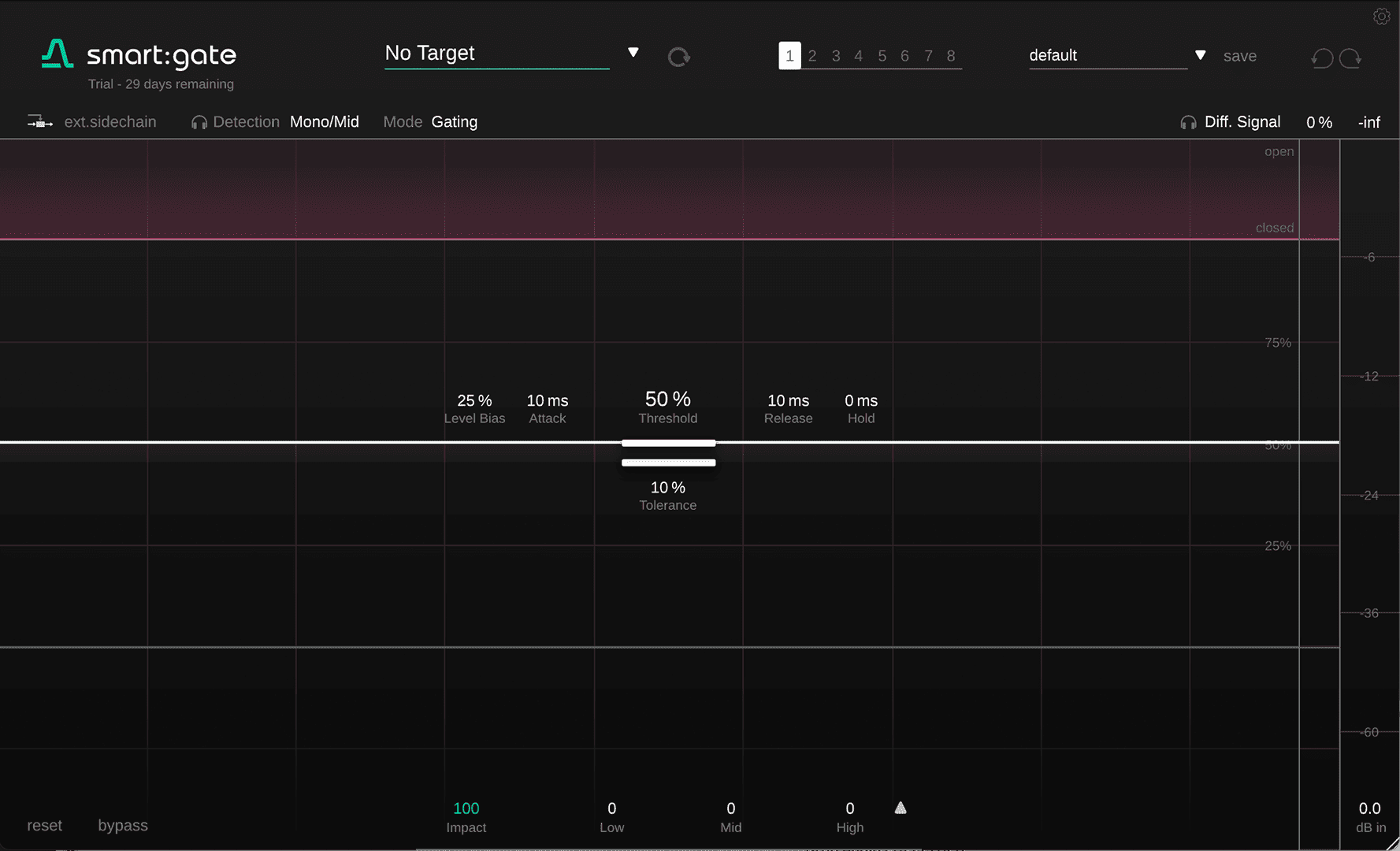 sonible smart:gate is capable of all the tricks and techniques covered in this article, but its added AI capabilities mean you can really hone in on the target for your gating. The predetermined sonic Profiles mean you can specify the kind of sound you’re trying to process, resulting in much more accurate gating than would be possible with a traditional gate.
sonible smart:gate is capable of all the tricks and techniques covered in this article, but its added AI capabilities mean you can really hone in on the target for your gating. The predetermined sonic Profiles mean you can specify the kind of sound you’re trying to process, resulting in much more accurate gating than would be possible with a traditional gate.
For example, there are elements of a snare and a tom that are tonally similar. sonible smart:gate is able to distinguish between the two, so if you’re trying to gate your snare, just select the Snare profile and no other elements should incorrectly trigger the gate. In other words, smart:gate is driven by the content of your signal, rather than the level. In addition to the artificial intelligence powered abilities of the plugin, smart:gate packs a wealth of other useful features that you’re unlikely to find anywhere else. Controls such as Level Bias and Tolerance let you fine tune how the plugin responds to the selected Target. And you can still use it as a ‘classic’, non-content-aware gate as well.
In addition to the artificial intelligence powered abilities of the plugin, smart:gate packs a wealth of other useful features that you’re unlikely to find anywhere else. Controls such as Level Bias and Tolerance let you fine tune how the plugin responds to the selected Target. And you can still use it as a ‘classic’, non-content-aware gate as well.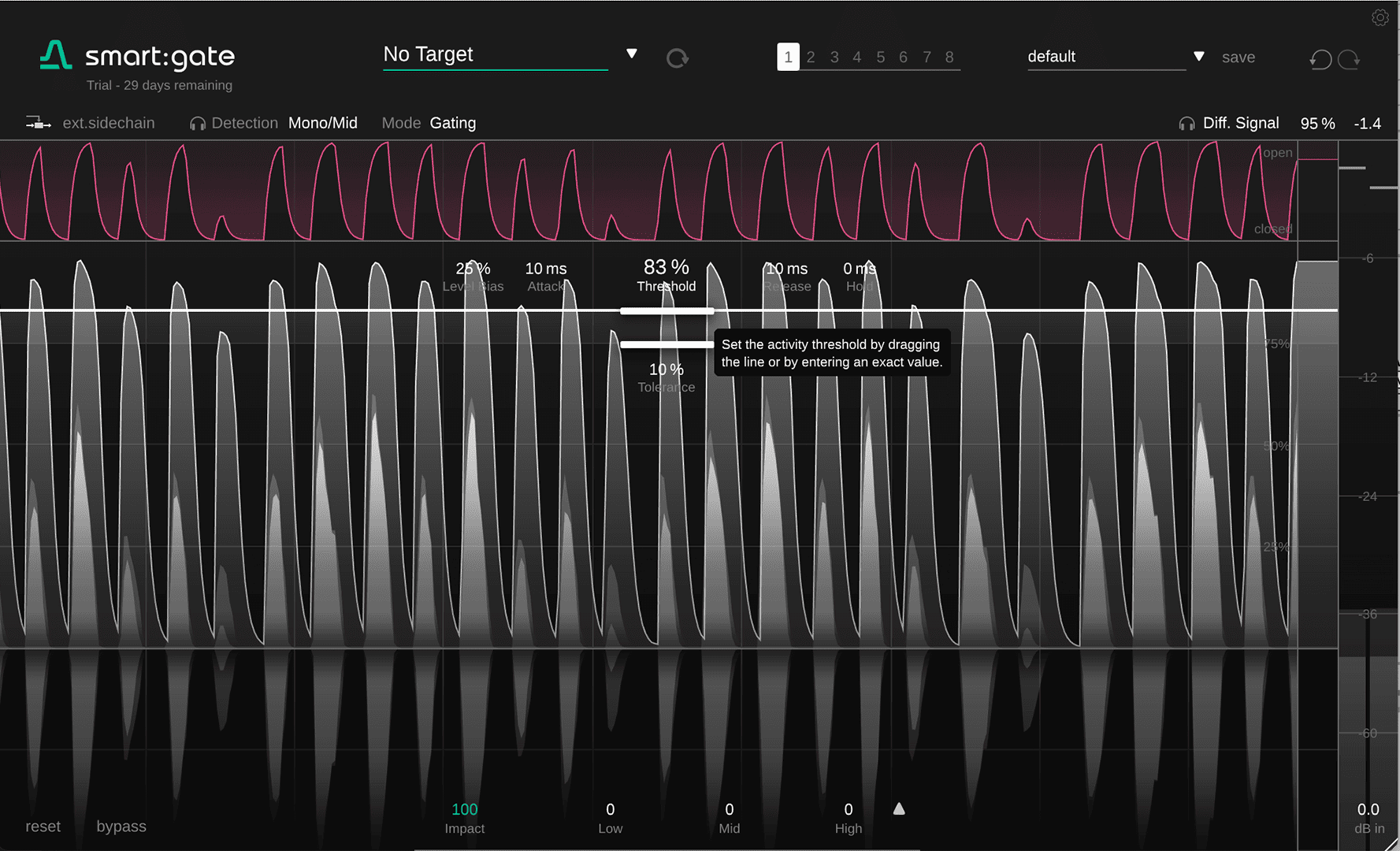 The Band Suppression mode allows the user to independently fine tune the suppression strength across three individual bands. This means that if you’re processing an instrument with a broad frequency range, such as a snare or tom, you can control how strong the gating is on the transient relative to the body, and vice versa.
The Band Suppression mode allows the user to independently fine tune the suppression strength across three individual bands. This means that if you’re processing an instrument with a broad frequency range, such as a snare or tom, you can control how strong the gating is on the transient relative to the body, and vice versa.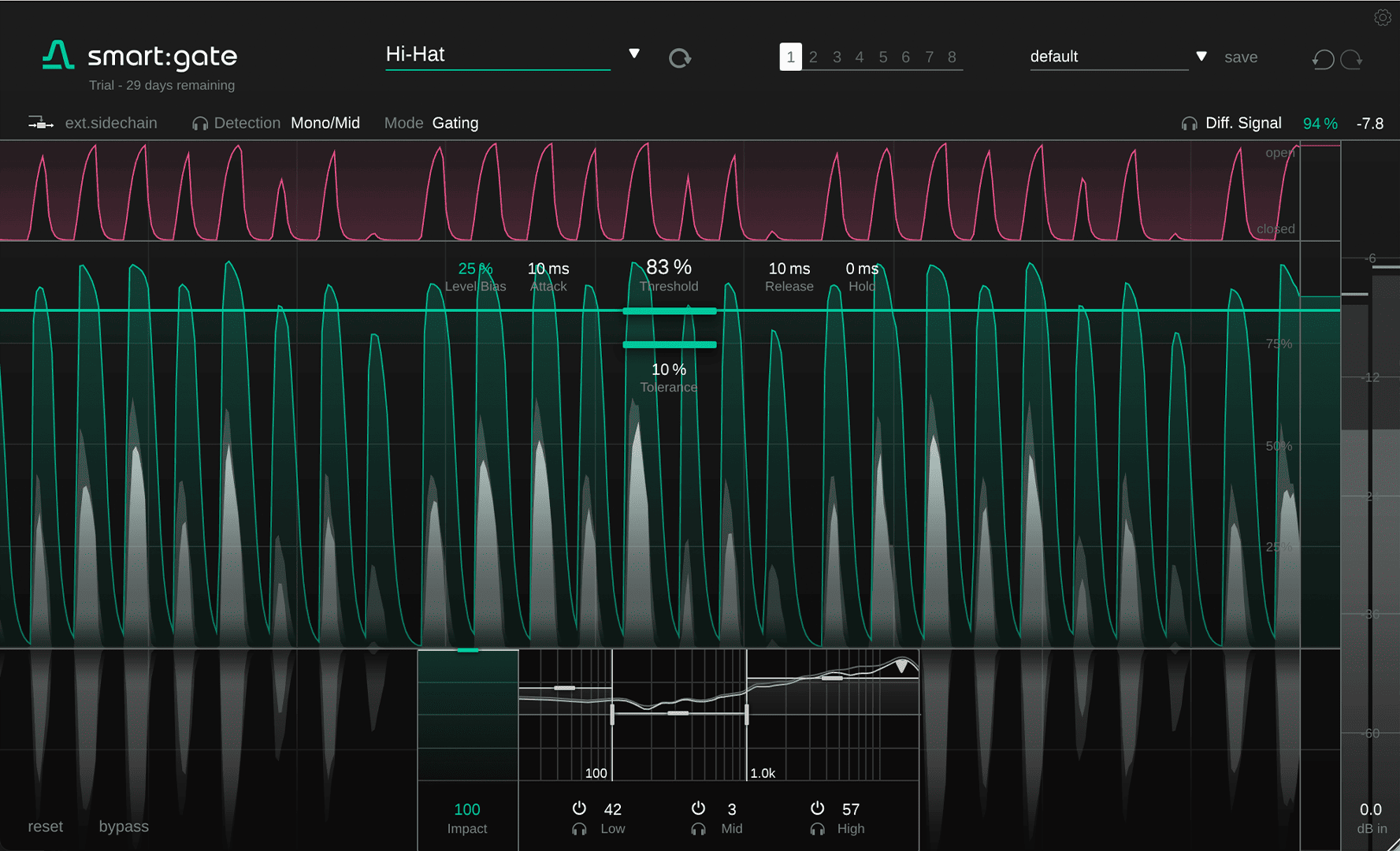 If you want to experience the next step in the evolution of audio gates, you can download a free full-featured trial of smart:gate now, or grab it as part of the smart:bundle.
If you want to experience the next step in the evolution of audio gates, you can download a free full-featured trial of smart:gate now, or grab it as part of the smart:bundle.